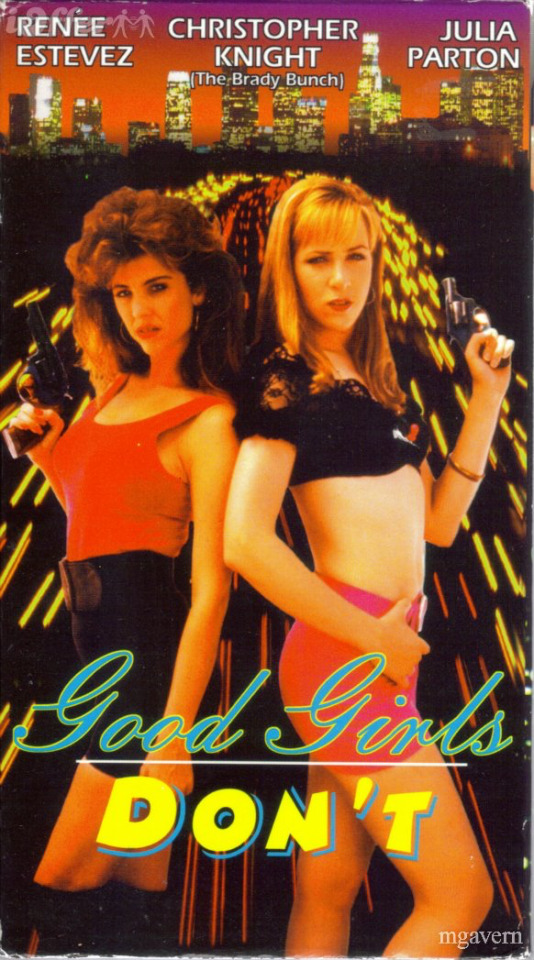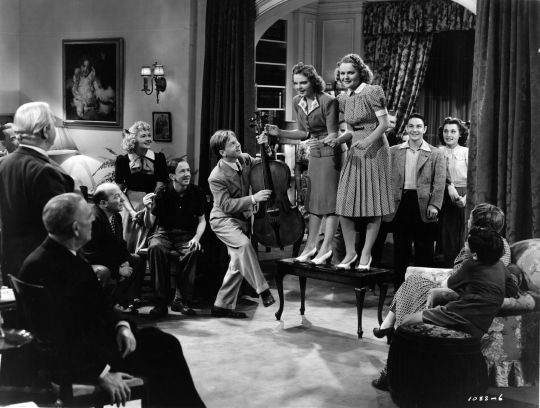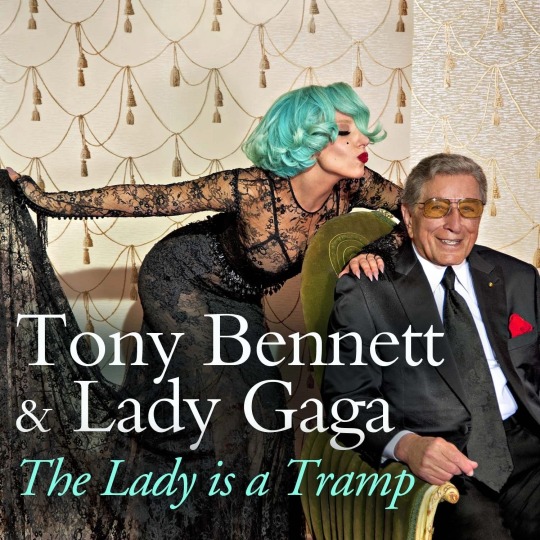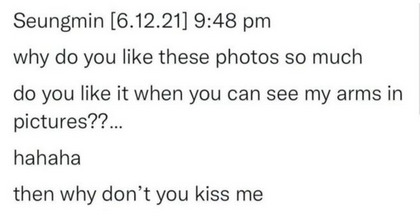#babes in arms
Video
youtube
Judy Garland - Good Morning (Babes In Arms, 1939)
6 notes
·
View notes
Text
youtube
1999, The Rodgers & Hart Story - Jane Krakowski performs My Funny Valentine from Babes in Arms
#uwaaaah#jane krakowski#babes in arms#richard rodgers#lorenz hart#musical#musicals#broadway#video#posted
3 notes
·
View notes
Video
youtube
Judy Garland and Mickey Rooney perform “Good Morning” in the MGM film Babes in Arms (1939)
Mickey Rooney and Judy Garland proved to be a dynamic duo on screen, appearing together in such films as Love Finds Andy Hardy (1938) and Babes on Broadway (1941). The pair had an amazing connection, perhaps helped by the fact that they had a lot in common off-screen. They both came from theatrical families. Garland, born Frances Ethel Gumm, made her stage debut as a toddler in her older sisters' act; and Rooney, born Joseph Yule, Jr., had a vaudeville performer for a father and a showgirl for a mother.
Both had parents who pushed them into show business. Rooney moved to California with his mother in the mid-1920s to launch his career, and she even changed his name to give it more Hollywood appeal. Garland grew up performing with her sisters before landing a film contract when she was only 13 years old. MGM Studios boss Louis B. Meyer reportedly hired Garland without having her do a screen test. She, too, went through a name transformation to make her more marketable. From an early age, Rooney and Garland both knew all too well the ups and downs of the entertainment business.
Rooney may have only been a year or so older than Garland, but he had much more film experience when they started working together. He made his film debut in the 1926 short, Not to Be Trusted. From there, Rooney starred in a series of shorts based on the comic strip character Mickey McGuire.
Garland and Rooney first met in 1935, when Rooney was a rising star and Garland was just starting out, but it took a few years for the studio realize that Garland and Rooney would be a winning combination.
Garland made her first feature film appearance in the 1936 sports comedy, Pigskin Parade. Garland and Rooney made their joint appearance in the 1937 film Thoroughbreds Don't Cry. Garland later credited Rooney with giving her some of the best acting advice of her career while making this film. He told the talented young performer to perform her lines "like you're singing it."
Rooney had already made four popular films in the Andy Hardy series before he was joined on screen by Garland. Starting with 1937's A Family Affair, the series explored the lives of Judge James K. Hardy and his family. Rooney played his teenaged son Andy, and this friendly character who seemed to represent an all-American image quickly won over audiences.
Garland first appeared in 1938's Love Finds Andy Hardy as Andy's friend Betsy. Early in her career, she was marketed as a girl-next-door type. The two characters' relationship mirrored the actors' off-screen connection as well. Garland, just like Betsy, had a romantic interest in Rooney at the start, but Rooney, similar to Andy, was too busy pursuing other girls to notice her. He was involved with a number of other actresses, including Norma Shearer, who was 20 years his senior.
Garland's career soon started to take off. When Rooney and Garland appeared in 1939's Babes in Arms, the pair shared top billing. The musical, directed by the legendary Busby Berkeley, proved to be a huge hit. Rooney and Garland seemed to play off each other in a way that made their performances better, and moviegoers found them to be a compelling and magical pair to watch.
Babes in Arms is a film version of the 1937 coming-of-age Broadway musical of the same title. Directed by Busby Berkeley, in addition to Rooney and Garland, it featured Charles Winninger, Guy Kibbee, June Preisser, Grace Hayes, and Betty Jaynes. It was Garland and Rooney's second film together as lead characters after their earlier successful pairing in the fourth of the Andy Hardy films. The film concerns a group of youngsters trying to put on a show to prove their vaudevillian parents wrong and make it to Broadway.
It premiered on October 13, 1939, and became one of the 10 biggest hits of the year. With all the adorable gumption of its young stars, Babes in Arms pays thoroughly entertaining tribute to the magic of show business.
The film was nominated for two Academy Awards: Best Actor in a Leading Role for Mickey Rooney, who was 19 at the time and became the second-youngest Best Actor nominee, and Best Music, Scoring by Roger Edens and Georgie Stoll.
4 notes
·
View notes
Text

Babes in Arms, 1939.
2 notes
·
View notes
Text
Good Morning
it's great to stay up late
Good Morning
Good Morning to You!
🆓 "I'm going to spać, good dzień everyone, hakuna matata 👋" - i tyleśmy go widzieli.

#Nacio Herb Brown#Arthur Freed#Judy Garland#Mickey Rooney#Betty Noyes#Gene Kelly#Donald O'Connor#Babes in Arms#Singin' in the Rain#Szogun#Misiek
4 notes
·
View notes
Text

#babes in arms#legs and heels#legs for miles#smoke show#legs for days#movies#cult classics#goddess#vhs tapes#good girls don’t
2 notes
·
View notes
Photo

Babes in Arms (1939)
When did the “theater kid” stereotype become a term of dismissal? Through my secondary school days (and this goes for those in secondary education at the present time, too), the theater kid designation was always derisive, to denote classmates too obsessed with musical theater and often keeping to their own clique. Being an orch dork myself in those days, I found myself in an awkward middle ground: understanding fully a theater kid’s love of musical theater, yet a bit intimidated by their devotion to the medium.
The above is a circuitous way to ironically note that I have never been uncomfortable with Metro-Goldwyn-Mayer’s (MGM) hey-kids-let’s-put-on-a-show musicals of the 1930s and ‘40s. Central to that subgenre of musical at MGM were Judy Garland and Mickey Rooney – both embodying, in most of their ten joint movie appearances from 1937-1948, the traits identifiable to anyone who understands how theater kids behave. Their movie musical collaborations contain no narratives of note, just sheer musical and choreographic virtuosity that holds up more than eighty years later. Babes in Arms, directed by Busby Berkeley, is the first of Berkeley’s unofficial “Backyard Musical” series starring Garland and Rooney – later followed by Strike Up the Band (1940) and Babes on Broadway (1941). Having seen only the middle film of that trilogy before, Babes in Arms is the weaker of the two I have completed. But for a roughly ninety-minute romp with puffed-up adolescent drama and a modest budget, Babes in Arms is decent value for those interested in movie musicals and the filmographies of those involved.
It is 1921 somewhere in America. Vaudeville patriarch Joe Moran (Charles Winninger) announces the birth of his only child, a son. Fatefully, his son is literally born on stage. Fast forward to the late 1930s and we find Joe’s son, Mickey (Mickey Rooney) teaming up with girlfriend Patsy Barton (Judy Garland; whose character comes from a different vaudeville family) to sell one of his songs to a music publishing company. He’s on piano; she’s the singer as they perform “Good Morning” (yes, that same song Gene Kelly, Debbie Reynolds, and Donald O’Connor hoofed so magnificently to in 1952’s Singin’ in the Rain). The publishers unsurprisingly purchase Mickey’s song. $100 (more than $2,000 in 2022’s USD) in hand, Mickey returns home to his parents but is aghast to learn that his parents – who left the vaudeville circuit shortly after the 1927 introduction of synchronized sound in movies – are heading back on tour without him. To convince his parents to bring him along, he and Patsy piece together a plan that any spurned child might pursue: to put on a show with the other musically talented kids in the community (deeming themselves the “Babes in Arms”).
Teenage drama ensues including an unnecessary physical assault, a preventable love triangle, and an unfortunate decision to use blackface (more on this later). The cast also includes Grace Hayes as matriarch Florrie Moran, Margaret Hamilton as busybody Martha Steele, Rand Brooks as Martha’s nephew, Guy Kibbee as a judge, and June Preisser as the third side of the aforementioned love triangle with an unfortunate nickname. Betty Jaynes plays Mickey Rooney’s elder sister while Douglas McPhail plays Don Brice, one of the older kids with an underutilized baritone.
Babes in Arms is technically based on composer Richard Rodgers and lyricist Lorenz Hart’s 1937 stage musical of the same name. And though Rodgers and Hart are credited, this film adaptation resembles little of their original work, with only two songs from the stage musical retained for this movie. “The Lady Is a Tramp” appears only in the score, while the title song and “Where or When”. “Babes in Arms” appears as Mickey Rooney rounds up the neighborhood teenagers to march militarily down the roads – crates and (gulp) torches in hand. With even brief quotations of “Ride of the Valkyries” from Wagner’s Die Walküre in the song (2:53 in provided video), these kids, however well-dressed, might be taking on their newest task too exuberantly. “Where or When”, a ballad that few ever seem to mention, is sung beautifully by Douglas McPhail and Betty Jaynes; the inclusion of the little children on their one-quarter or half-sized string instruments is a charming touch. Garland briefly sings “Where or When” too, and one just wishes she could carry the song to its conclusion.
Among the MGM musical entries, most will recognize “Good Morning” (music by Nacio Herb Brown, lyrics by Arthur Freed) during Rooney and Garland’s attempt to sell the former’s song to the publishing agency. This original rendition of “Good Morning” does not have the choreographic mastery as seen in Singin’ in the Rain, but it certainly establishes that easygoing dynamic audiences would see often between Garland and Rooney.
youtube
By the time the film hits the stage show that concludes Babes in Arms, Mickey, Judy, and company will have sung quite the gamut of musical numbers. Separating themselves from most of the soundtrack are “Daddy Was a Minstrel Man” and “God’s Country”. The former (music and lyrics by Roger Edens) opens the stage show and is the first part of a sequence where both Judy Garland and Mickey Rooney don blackface. Blackface, which originated from American minstrel shows in the early nineteenth century, is a theatrical device in which a typically non-black person wears makeup to portray a happy-go-lucky caricature of a black person. This offensive practice predates cinema and serves no useful performative or cinematic purpose – a non-black performer can pay homage to black culture without perpetuating stereotypes, such as applying blackface. Unfortunately, both Garland and Rooney would be in blackface again in the last film of the Backyard Musical trilogy, Babes on Broadway. For some, “Daddy Was a Minstrel Man” and the following song, “I’m Just Wild About Harry” (a 1921 number with music by Eubie Blake and lyrics by Noble Sissle), will be distracting, to say the least. Together, they smash the picture of teenage innocence that (mostly) courses through Babes in Arms.
“God’s Country” is unabashed American flag-waving that proclaims the U.S. as a divinely dynamic nation. Briefly quoting the melody from “Yankee Doodle”, the song – considering that the United States was, at this time, a mostly insular nation that would rather not be involved with the mounting tensions in Europe and Asia – offers some curious lyrics, such as celebrating American freedom with this:
A hundred million rooters can’t be wrong,
So give a hand, give a hand,
Give a cheer for your land,
Where smiles are broader, freedom greater.
Every man is his own dictator.
Even more surprising lyrics appear shortly after that lightly rib the soon-to-be Axis nations:
We’ve got no Duce;
We’ve got no Führer.
But we’ve got Garbo and Norma Shearer.
Got no goose step;
But we’ve got a Suzie Q step
Here in God’s country!
For a movie made before and released after Nazi Germany’s invasion of Poland, this is as strong a criticism as one might expect from a major Hollywood movie at this juncture. Through most of the 1930s, every major Hollywood studio except Warner Bros. heeded the demands and threats of Los Angeles-based Nazi Germany diplomat Georg Gyssling, who suggested edits on certain screenplays to root out any critique of Germany and Nazism. This cinematic appeasement was sweeping, but it appears that Gyssling and his associates missed a small detail in Babes in Arms.
Other than the wall-to-wall soundtrack, the main attraction for Babes in Arms are its two co-stars. Still teenagers, Rooney and Garland were given an adult’s workload. Including both feature films and shorts, Babes in Arms was Mickey Rooney’s ninety-sixth of ninety-eight films of the 1930s. Somehow, Rooney, already one of MGM’s brightest lights thanks to the Andy Hardy series (1937-1958), is abundantly manic and tireless here in his first movie musical. Even in comparison to the exhaustingly hyperactive of mainstream American filmmaking, Rooney’s enthusiasm almost leaps off the screen. For her part, Judy Garland was not a household name yet when she trotted in front of the camera to film Babes in Arms. Her performance is not quite assured here, and any hint of believable romance between her and Mickey Rooney is spotty more often than not in part due to a sloppy screenplay. By the time of the film’s release, The Wizard of Oz (1939) had already been out in theaters for more than a month. History correctly regards The Wizard of Oz as an essential film, but Babes in Arms grossed more at the box office in 1939. Babes in Arms cemented a career 1939 for Judy Garland, which, just before the film’s premiere, also saw her lay her hands and feet in the cement at Grauman’s Chinese Theater.
Director Busby Berkeley (choreographer on 1933’s 42nd Street and Gold Diggers of 1933) made a name for outlandish mass choreography, but his choreographic style fell out of fashion by the end of the 1930s. Babes in Arms is pedestrian work from the master visualist, but it also marks the beginning of lyricist Arthur Freed’s (1943’s Cabin in the Sky, 1951’s An American in Paris) career as an MGM producer. Within the MGM hierarchy, the “Freed unit” was an assemblage, under Freed’s leadership, of actors (many of whom were principally stage actors before signing up with MGM), composers and lyricists, writers, and directors with the express purpose of crafting movie musicals with little executive interference. Babes in Arms does not yet quite contain that artistic freedom of an Arthur Freed musical, but many of the personnel in front of and behind the camera would become key contributors to the Freed unit.
As manufactured and predictable as much of Babes in Arms’ drama might be, I find it still quite watchable. Several statements from Mickey Rooney decades after completing this film perhaps explain why. In any case that the Backyard Musical trilogy comes up in a Mickey Rooney interview, Rooney usually noted how semiautobiographical these films were for himself and Garland. Both came from vaudevillian families; public performance as natural to them as breathing. Garland and Rooney spent much of their lives on a stage – theater kids, if you will – and derived profound happiness from performance. Even when surrounded by disagreeable, perhaps abusive, persons while making these movies (there are indications that Berkeley was difficult towards Garland, who was already enduring MGM head Louis B. Mayer’s cruel barbs regarding her physical appearance), that desire to embolden and transport others remains.
Babes in Arms might not be to the liking of those who still disdain theater kids, nor any of the Backyard Musicals. For others like yours truly, who appreciate the musicality and energy on display but never quite belonged to either extreme, Babes in Arms is lighthearted entertainment, flawed in execution, honestly acted.
My rating: 6/10
^ Based on my personal imdb rating. My interpretation of that ratings system can be found in the “Ratings system” page on my blog (as of July 1, 2020, tumblr is not permitting certain posts with links to appear on tag pages, so I cannot provide the URL).
For more of my reviews tagged “My Movie Odyssey”, check out the tag of the same name on my blog.
#Babes in Arms#Busby Berkeley#Mickey Rooney#Judy Garland#Charles Winninger#Guy Kibbee#June Preisser#Margaret Hamilton#Jack McGowan#Betty Jaynes#Douglas McPhail#Kay Van Riper#Richard Rodgers#Lorenz Hart#Arthur Freed#Nacio Herb Brown#Roger Edens#TCM#My Movie Odyssey
9 notes
·
View notes
Text
As I was a little cruel about Lorenz Hart in my previous post, I thought I would expand here.
I love Hart. I love his wryness, his irony, the melancholy cynicism that he inflects his lyrics with which sets him apart from other lyricists of the era. It's well known at this stage that Hart was an alcoholic, a repressed gay man who struggled hugely with body image (standing at under 5 foot) and that he drank himself to an early grave, leading Rodgers to take up with Hammerstein. His melancholy, cynical sensibility feels true, and his life sadly seems to confirm it. A lyric like I Wish I Were In Love Again, sung above by Judy Garland, takes even a jaunty love song and throws a layer of irony over it - I love it.
Sondheim is very critical of Hart in Finishing the Hat, however, and once you hear his criticism it's hard not to hear it in his songs. Sondheim talks of once performing a stunt in public where he would open the Rodgers and Hart songbook at random and prove that on any page he could find a mistressed syllable, poor syntax, or an equivalent lyrical sin. Take Bewitched, which probably has some of Hart's best work - worshipping the trousers that cling to him says so much about the superficiality of attraction, but sung by an aging woman in a relationship with a young man it is not flippant, but desperately sad.
Despite this, the constant proliferation of "am I"s at the end of sentences makes a song which is deeply emotive and character driven actually quite difficult to understand; there are always several verses that I find myself parsing as I listen, which is never good.
Having said that, Oscar Hammerstein was very keen to rehabilitate Hart's image for Sondheim, giving him the credit of bringing realism into lyrics in the 30s. Whilst this might seem odd in the middle of tortuous syntax, a song like Bewitched is so much more human in its honesty as well as its colloquial vocabulary than other songs of the era. So I can't be too cruel to Hart - even with its difficult lyrics, Bewitched still has a place in the pantheon of all time greats.
#lorenz hart#i wish i were in love again#babes in arms#judy garland#queue stole my heart away#musical theatre#richard rodgers#bewitched#pal joey#stephen sondheim#oscar hammerstein#vivienne segal#finishing the hat#Spotify
1 note
·
View note
Link
#judy garland#babes in arms#the wizard of oz#girl crazy#for me and my gal#meet me in st. louis#the clock#the pirate#summer stock#a star is born#judgment at nuremberg#i could go on singing
2 notes
·
View notes
Text
The big musical fun show!
0 notes
Video
youtube
SATURDAY MUSIC VIDEO MATINEE: “My Funny Valentine”—This ironic love song is from the comedy-musical BABES IN ARMS, a Rodgers & Hart musical that premiered this weekend in 1937. It’s the story of a group of small-town Long Island teenagers who put on a show to avoid being sent to a work farm by the town sheriff—the original 1937 version of the musical had political overtones with subplots about Communism and racism. A character named Billie Smith sings “My Funny Valentine” to a man named Valentine "Val" LaMar. Billie describes Valentine's characteristics in unflattering terms (at one point Billie describes Valentine's looks as "laughable," in keeping with the title), but ultimately affirms that he makes her smile and that she doesn't want him to change. The description of Valentine was consistent with lyricist Lorenz Hart's own insecurities and belief that he was too short and ugly to be loved. Hart, with Richard Rodgers,composed the musical, which included “Johnny One Note,” “The Lady is a Tramp,” “Where or When” and other songs that are now in The Great American Songbook.
Ella Fitzgerald’s remake of “My Funny Valentine” inspired me to do it, and I’m familiar with signature versions by Chet Baker, Elvis Costello (whose version I heard first), and Miles Davis. I do it in D minor and it’s one of my favorites to sing out.
https://www.youtube.com/watch?v=p3-wdP-twkU
#Valentine #ValentinesDay #babesinarms #longisland #teenagers #myfunnyvalentine #billiesmith #valentinelamar #rodgersandhart #richardrodgers #lorenzhart #whereorwhen #greatamericansongbook #musical #ellafitzgerald #chetbaker #elviscostello #milesdavis #johnnyjblair #singeratlarge #williamsportpa #bullfrogbrewery #jeremiahs
#valentine#Babes in Arms#Long Island#teenagers#Billie Smith#Valentine Lamar#Rodger & Hart#Great American Songbook#musical#Ella Fitzgerald#Chet Baker#Elvis Costello#Miles Davis#Johnny J Blair#singer at large
0 notes
Text
youtube
1999, The Rodgers & Hart Story - Susan Egan and Brian d'Arcy James perform Where or When from Babes in Arms
#the whole doc/special is on youtube and it's great#susan egan#brian d'arcy james#babes in arms#richard rodgers#lorenz hart#musical#musicals#broadway#video#posted
0 notes
Text

🎺【The Lady Is a Tramp】是 Rodgers and Hart 1937 年音樂劇《Babes In Arms》中的一首表演歌曲,由 Mitzi Green 演唱。這首歌是對紐約上流社會及其嚴格禮儀的惡搞 (這首詩歌的第一段歌詞侍者首歌曲的意義重點:「I get too hungry for dinner at eight...」 (我太餓了,八點才吃晚飯…)。
2011 年,女神卡卡 @LadyGaga 與 Tony Bennett / @itstonybennett 一起翻唱了這首歌,該歌曲收錄在 Tony Bennett 的專輯《Duets II》中。該歌曲於 2011 年 10 月 3 日作為單曲發行。
這首歌還收錄在 Tony Bennett 和 Lady Gaga 的首張合作爵士專輯《Cheek to Cheek》 (爵對經典) 的 HSN 版和國際實體豪華版中,作為專輯加值曲目。
他們翻唱的〈The Lady is a Tramp〉是專輯錄製過程中,最後一首錄製完成的歌曲,是在經過漫長的修改之後,距離專輯截止日期前幾天才大功告成。
於 2011 年 7 月 31 日在紐約 Avatar Studios 1 號錄音室進行。樂手與 Tony 他們和 Gaga 一起度過了兩個小時,在那段時間裡,他們為 MV 拍攝了六次。當地《The New Yorke》報導稱 Lady Gaga 當時非常緊張,一整天都在喝威士忌。Gaga 問 Tony:「以前是不是所有的女孩子都要喝醉了才有辦法和你一起出去玩?你真是一艘夢想之船!」
音樂錄影帶 MV 中,Tony Bennett 與 Lady Gaga 在錄音室的樂譜架前一起演唱〈The Lady Is a Tramp〉。
兩人都穿著黑色系服裝,Tony 穿著西裝,Gaga 則穿著黑色半透明蕾絲晚禮服。儘管他們穿著黑色衣服,但他們都將造型加入一些其他色彩形成對比,Tony 胸前的口袋裡放著一塊紅色手帕,而 Gaga 則戴著綠松石色的鮑伯假��。
在 MV 的開頭和其他的鏡頭中,Gaga 拿著一個威士忌杯。影像呈現出的氛圍輕鬆愉快,兩位歌手臉上不斷露出微笑,用手勢、擺臂表達當下的幸福。
與歌詞內容相符,MV 的鏡頭也採用了兩人一來一往的風格,展示了兩位歌手的歌詞切換。除了基本舞動之外,兩人還在歌詞的搭配下做出手勢並互相指向對方。
Gaga 從 Tony 的口袋裡拉出紅色手帕揮灑,她還多次舉起裙子的下擺跟著歌曲擺動,並在她唱道「I'm so broke.」 (我破產了) 的時候轉向 Tony 的麥克風。
最後一句歌詞是「That's why this lady is a tramp.」(這就是為什麼這位女士是流浪漢。) MV 最後,Gaga 親吻了 Tony 的臉頰,Tony 向她表示感謝。
◉ 歌名:The Lady Is a Tramp
◉ 演唱:Tony Bennett & Lady Gaga
◉ 詞曲人:Lorenz Hart & Richard Rogers
◉ 製作人:Phil Ramone & Dae Bennett (Tony Bennet 的兒子)
◉ 封面攝影:Kelsey Bennett (Tony Bennet 的孫女)
◉ MV導演:Unjoo Moon
🎬 音樂錄影帶
youtube
#東尼班奈特 #女神卡卡 #爵對經典 #爵愛經典 #女神卡卡臺灣粉絲團 #環球音樂 #西洋 #西洋音樂 #爵士 #音樂 #レディーガガ #레이디가가 #TonyBennett #LadyGaga #Gaga #LittleMonsters #Taiwan #QueenOfPop #Jazz #Music #GRAMMYs #Documentary #DannyBennett #CheekToCheek #LoveForSale #OneLastTime #TheLadyAndTheLegend #TheLadyIsaTramp #DuetsII #TonyGaga
#gaga#ladygaga#女神卡卡#grammys#ladygagataiwan#pop#queenofpop#taiwan#albumoftheyear#songoftheyear#the lady is a tramp#TonyBennett#東尼班奈特#Mitzi Green#Babes In Arms#Duets II#翻唱#專輯#爵士#Jazz#音樂#Music#流行#Dae Bennett#Kelsey Bennett#Unjoo Moon#Lorenz Hart#Richard Rogers#1937#2011
0 notes
Text
Babes in Arms (1939) movie review
https://wf200reviews.blogspot.com/2022/12/babes-in-arms-1939-movie-review.html
0 notes
Text
Stefanie Roth
#stefanie roth#fitness#hardbody#fit#muscle#fit woman#fit girls#fitness girls#training#muscle girl#biceps#triceps#veins#hand veins#arm veins#female abs#girls abs#hard abs#six pack abs#fit babe#fit model#fit women#fit muscle#fit beauty#fitness women#fitness beauty#gym#stefanie foli
463 notes
·
View notes
Text
bang chan: haha im gonna roleplay a nerd flirting on bubble
actual nerd flirting on bubble:

#he really said haha 😏 you like my bare arm ? (which is such a rare occurrence that it is in fact notable) then why dont you kiss me#its so funny to me i genuinely laughed out loud like babes...........#and then he never acted up again.#lmaooooo#now hes just like AY i was eating gimbap lol 😭#kim seungmin#stray kids#🐶
461 notes
·
View notes